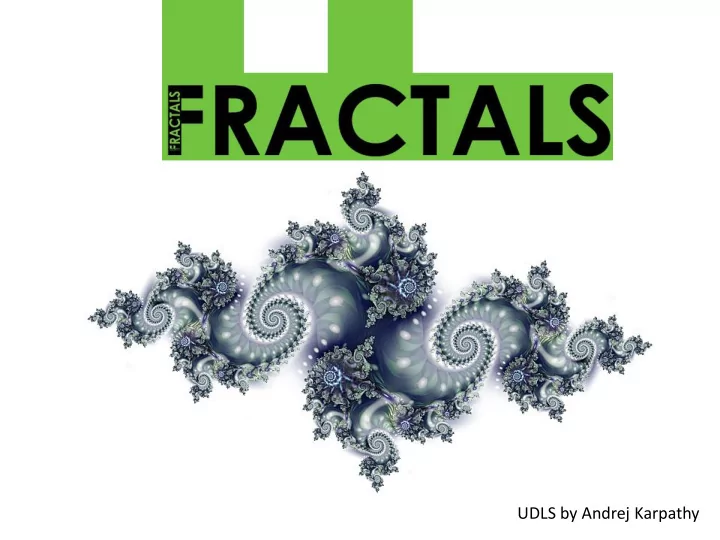

UDLS by Andrej Karpathy
How to spot them • Has detail on every level • Is self-similar at different sizes
test
Not magic
Julia Sets: How are they generated?
Function iteration • c= some_complex_number() • for all x,y in window of interest: • z= x + iy • for i=1..1000: • z= z^2 + c • if |z|<4: color (x,y) black
Function iteration • c= some_complex_number() • for all x,y in window of interest: • z= x + iy • for i=1..1000: • z= z^2 + c • if |z|<4: color (x,y) black c=0 c= 1.23+0.7i
Mandelbrot set • always start at 0, and look at effect of changing c for all x,y in square of length 2: c= x+iy z= 0 for i=1..1000: z= z^2 + c if z<2: color (x,y) black
Demo of fractal eXtreme
Geometric fractals
Generating the Sierpinski Triangle • Geometric construction / L-system
Generating the Sierpinski Triangle • Pascal’s triangle
Generating the Sierpinski Triangle • Cellular automata • Rule 90
Generating the Sierpinski Triangle • Chaos game do like... 10000 times or something: p = randompoint() for i=1..100: p= (p+randomvertex())/2 plot black dot at p
Koch Snowflake L system basis and generator: Perimeter calculation: Iteration 0: 3 Iterations: Iteration 1: 3*(4/3) Iteration 2: 3*(4/3)^2 … Iteration n: 3*(4/3)^n
Fractals in nature
Fractals in nature
3D fractals
3D Fractals Video
Fractal music
return; END
Recommend
More recommend